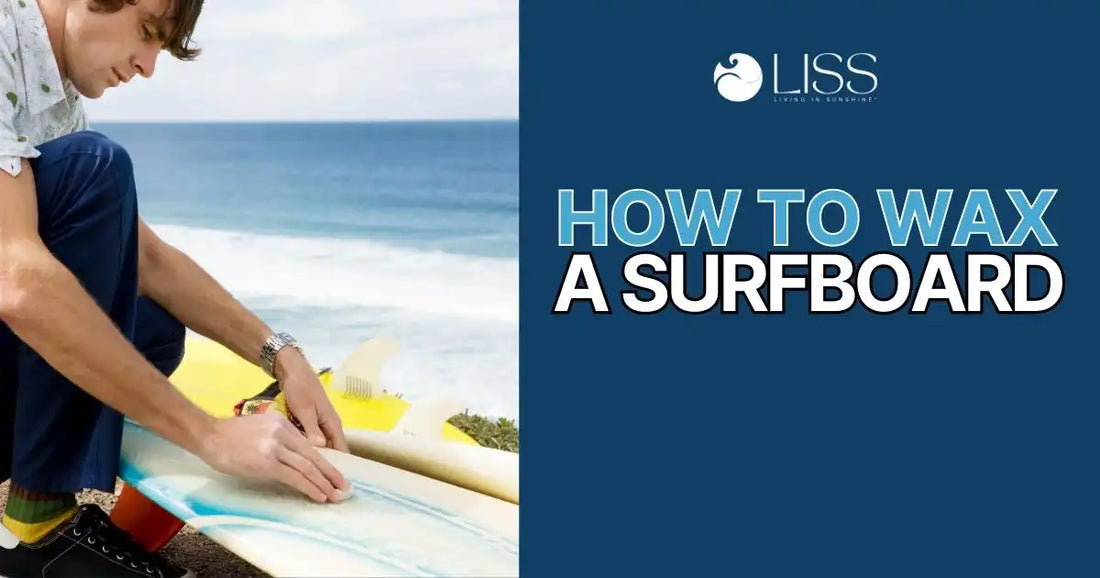
How to Wax a Surfboard
To wax a surfboard, start by cleaning it, then apply a basecoat in a circular motion. Follow with a topcoat using even strokes for grip, covering the deck where your feet will go.
Many surfers face challenges due to limited knowledge of surfboard maintenance, often leading to slips and falls. In Pulseer, a leading surf equipment brand, surfing without waxing your board increases slip risks by up to 65%, especially on fiberglass boards. This shows that beginners and even experienced surfers struggle with grip and control when boards aren’t properly waxed, which can affect performance and safety.
So, how can you ensure your surfboard is waxed correctly for the best traction and ride?
Why Waxing Your Surfboard Matters?

You might be wondering, ‘Why do you wax a surfboard?’ Here are the reasons why:
- Enhanced Grip and Traction: Wax gives your surfboard the friction needed to prevent slipping during turns and maneuvers, keeping you balanced and safe on the waves.
- Board Protection: Wax adds a light layer over the deck, protecting the surface from minor scratches, sun damage, and wear, helping your board last longer.
- Improved Performance: A properly waxed board enhances stability and control, making it easier to maneuver and ride confidently in all wave conditions.
What You’ll Need In Waxing Your Surfboard

Here are the things you need for waxing a surfboard:
Basecoat Wax
Basecoat wax is applied first to create a solid foundation on your surfboard. It adheres well to the deck and ensures that the topcoat wax sticks properly. Choosing the right basecoat for the water temperature helps maintain consistent traction and prevents slipping during your surf session.
Topcoat Wax
The topcoat wax is layered over the basecoat to provide maximum grip. It comes in different types for various water temperatures—cold, warm, and tropical—so selecting the correct one is essential for optimal performance. The topcoat ensures your feet stay securely planted on the board while riding waves.
Wax Comb
A wax comb is an essential tool for spreading and texturing your wax. Use it to create grooves or patterns that enhance traction and control. It also helps remove old wax, keeping your board clean and ready for a fresh application.
Clean Cloth
A clean cloth is necessary for preparing your surfboard before waxing. Wipe the deck to remove dust, dirt, or leftover wax residue. After waxing, it can be used to clean edges and maintain a tidy, smooth finish, ensuring the best performance on the waves.
Steps on How to Wax Your Surfboard

Here are the simple steps in waxing your surfboard:
1. Clean Your Surfboard
Before waxing, it's essential to clean your surfboard to ensure better adhesion and grip. Start by wiping down the deck with a cloth or paper towels to remove any dust and debris. If there's old, worn-out wax, use a wax comb or scraper to remove it.

For any remaining residue, wipe the surface with rubbing alcohol to ensure it's fully clean and ready for a fresh coat of wax. For an even more effective clean, consider using The Clean Fin to remove wax buildup and prepare your surfboard for optimal waxing.
2. Apply the Base Coat
The base coat forms the foundation for the top coat, providing essential grip. Start by selecting a wax suited to the current water temperature—whether cold, cool, warm, or tropical. Once you have the right wax, apply it to the surfboard in a criss-cross pattern. This technique creates a textured surface that enhances grip and ensures the top coat adheres properly for optimal performance.
3. Apply the Top Coat
The top coat enhances grip and protects the base coat. To apply, choose a wax that suits the water temperature—use a softer wax for warmer waters and a firmer one for colder conditions. Apply the top coat over the base coat in circular motions to ensure even coverage and improve traction, providing a smooth, grippy surface for better performance on the waves.
4. Maintain Your Wax Job

Proper maintenance is key to ensuring long-lasting grip on your surfboard. After each surf session, it’s important to reapply the top coat to maintain the grip and traction you need. A convenient way to keep your surfboard in top shape is with The Wax Box, which includes everything you need to easily apply and maintain your surfboard wax, including a wax comb and other essential tools.
Additionally, if the wax becomes too smooth or slick over time, use the wax comb from The Wax Box to roughen the surface and restore its texture, ensuring optimal performance for your next session.
Surfboard Wax Patterns
The key to improving grip and stability lies in creating effective wax patterns on your surfboard. The design you choose will depend on your personal preference, surf conditions, and the type of board you're using. Here are some of the most popular techniques:
- Circular Technique: Apply the wax in overlapping circular motions up and down the board. This method builds bumps, creating a consistent layer of wax that covers the entire surface.
- Grid Technique: In this method, draw straight lines in one direction, then cross them over in the opposite direction to form a grid. Ensure even coverage from rail to rail for balanced traction.
- Cross-Hatch Technique: Create a diamond-like pattern by drawing vertical lines and crossing them with diagonal ones. This intersection of lines provides maximum grip.
- Freestyle Technique: Tailor your wax application to specific areas of your board, depending on what feels best for you. This approach is more personal, as some surfers prefer the circular pattern, while others may opt for the crosshatch design.
Keep Your Surfboard Ready for Action
Proper waxing is essential for your surfboard's performance, safety, and longevity. It not only improves grip and stability but also enhances your control on the waves. By choosing the right wax, applying it correctly, and maintaining it regularly, you ensure optimal traction and protection. Whether preparing for a session or refreshing after use, a well-waxed board boosts your confidence and comfort. Taking time to wax properly makes a noticeable difference in your surfing experience.
At Living in Sunshine, we understand how important it is to care for your surfboard. That's why we offer premium accessories to keep your gear in top condition. Browse our Freestanding & Wall-Mounted Board Racks Collection to find durable, stylish solutions for storing and organizing your boards. We’ve got everything you need to keep your surfboard ready for the waves!
Frequently Asked Questions for How to Wax a Surfboard
How often should I wax my surfboard?
For optimal grip, it's recommended to add a fresh layer of wax to your surfboard after each surf session. However, depending on the water temperature, you should fully clean and re-wax your surfboard every 2-3 months or around 4-6 times per year. Regular waxing ensures your board maintains the traction you need for better control and performance. Understanding the best way to wax a surfboard helps you maintain consistent grip for every ride.
How long should you wait after waxing your surfboard?
When waxing your board, apply the wax and allow it to soak into the base for optimal grip. The ideal wait time is anywhere from 30 minutes to overnight—the longer you leave it, the better the results. After that, simply scrape, brush, and get ready to ride!
Can I wax my surfboard in cold weather?
Yes, you can wax your surfboard in cold weather, but you should choose a wax designed for colder temperatures. Cold-water wax is firmer and provides better traction, ensuring your grip remains steady even in cooler conditions.
Is it safe to wax a surfboard at home?
Yes, waxing your surfboard at home is safe and easy. All you need are the right materials, like a wax comb, cloth, and wax suitable for your water conditions. It’s a simple process that anyone can learn with a little practice.

